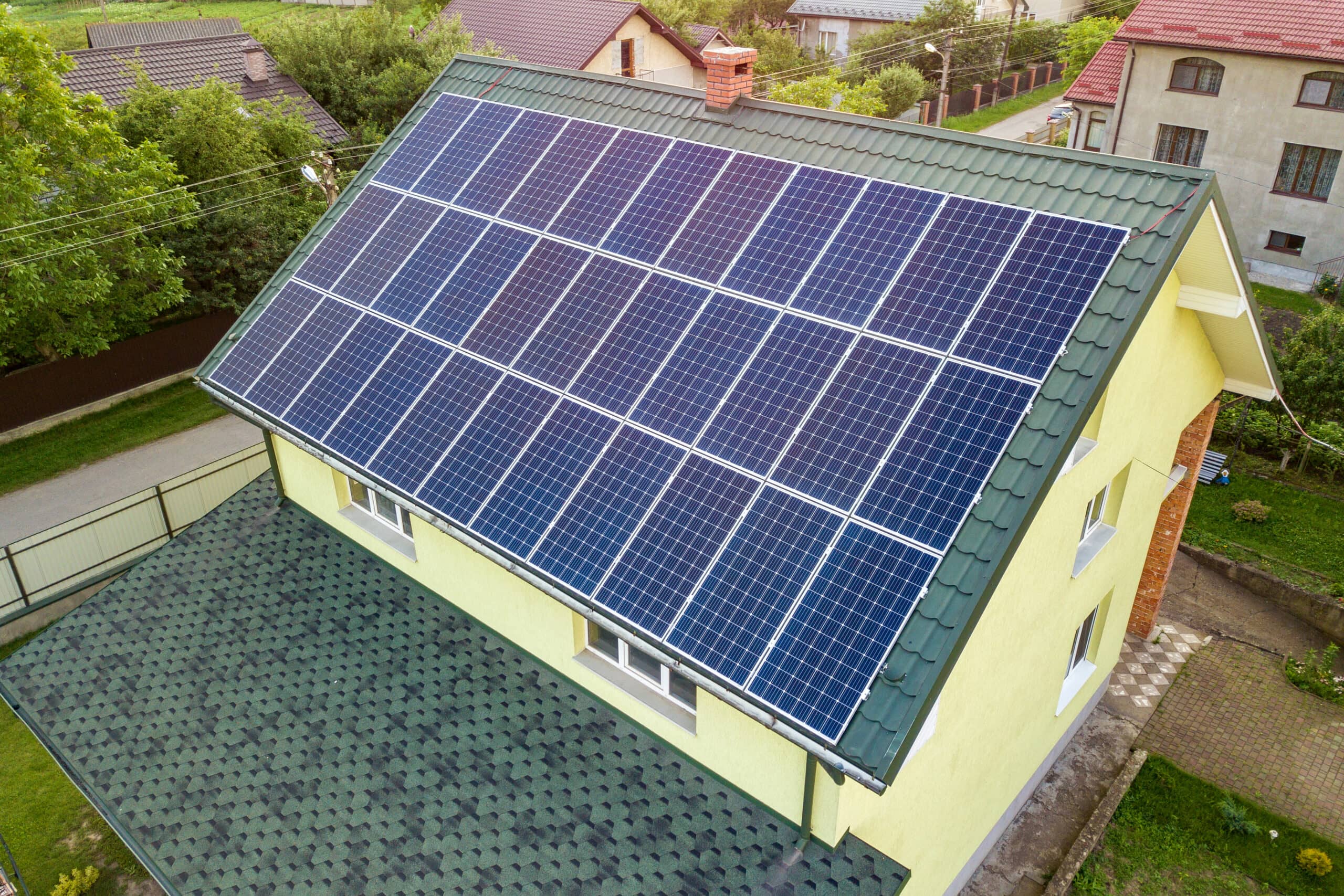When managing the battery for your solar panels, it’s essential to do it efficiently. You can maximize your energy and ensure longevity by effectively managing your solar panel batteries. This article will explore practical tips on maintenance, monitoring, and optimizing battery performance. Get ready to power up your solar panels like a pro!
Understanding Solar Panel Batteries
In solar panel systems, batteries guarantee a dependable and effective power source. They store the excess energy your solar panels generate during the day so you can use it at night or during cloudy periods.
Different types of solar panel batteries are available, including lithium-ion, lead-acid, and flow batteries. Let’s examine each type in detail:
1. Lithium-ion Batteries are becoming increasingly popular due to their high energy density, longer lifespan, and lower maintenance requirements. They are lightweight, compact, and have a higher depth of discharge, meaning you can use more of the stored energy before recharging.
2. Lead-Acid Batteries: These are the most common types of solar panel batteries and have been used for a long time. They are reliable and cost-effective but have a shorter lifespan than lithium-ion batteries. Lead-acid batteries require regular maintenance, such as checking the water levels and ensuring proper ventilation.
3. Flow Batteries: These batteries use a liquid electrolyte that flows through the system to store and release energy. They have a longer lifespan and can be charged and discharged simultaneously, making them suitable for high-capacity storage applications. However, flow batteries are still relatively new and may have higher upfront costs.
When comparing battery technologies, it’s essential to consider factors such as performance, lifespan, and cost. Lithium-ion batteries generally outperform lead-acid batteries in terms of efficiency and lifespan, but they can be more expensive upfront. Flow batteries offer longer lifespans but may have higher initial costs.
Ultimately, the choice of battery technology depends on your specific needs, budget, and preferences. It’s a good idea to consult with a solar energy professional who can assess your requirements and recommend the most suitable battery technology for your solar panel system.
Monitoring Battery Performance
Monitoring battery performance is crucial for ensuring optimal efficiency and longevity. By closely monitoring your battery’s health and usage, you can identify potential issues early on and take appropriate action.
There are various monitoring tools and systems available to track battery performance. Some standard options include battery management systems (BMS), intelligent monitoring software, and energy monitoring devices. These tools provide valuable insights into battery health, charge levels, discharge rates, and overall performance.
Consider voltage levels, temperature fluctuations, and charging/discharging cycles to identify patterns or trends when interpreting battery performance data. Any significant deviations from normal behavior could indicate a problem.
In addition, keep an eye out for warning signs like reduced capacity, slower charging times, or excessive heat generation. Regularly reviewing and analyzing battery performance data will help you identify potential issues early and take proactive measures to maintain optimal efficiency.
Remember, if you notice any changes or abnormalities in battery performance, it’s always a good idea to consult a professional or manufacturer for further guidance. Monitoring battery performance is essential to maximizing your battery system’s efficiency and lifespan.
Maximizing Battery Lifespan
Maximizing the lifespan of solar panel batteries is crucial for getting the most out of your investment. Here are some strategies to help you extend their lifespan:
1. Avoid deep discharges: Avoid fully draining your batteries regularly. Deep discharges can lead to increased wear and tear, reducing lifespan. Instead, aim for shallow discharges and recharge them promptly.
2. Optimal charging practices: Follow best practices for charging your batteries. Avoid overcharging using charge controllers or intelligent charging systems that regulate the charging process. This helps prevent degradation and ensures efficient charging.
3. Maintain proper temperature: Temperature plays a significant role in battery longevity. Extreme heat or cold can affect performance and lifespan. Keep your batteries in a temperature-controlled environment and avoid exposure to temperature extremes.
4. Ensure proper ventilation: Proper ventilation is essential for dissipating heat generated during charging and discharging. Ensure your battery storage area has adequate airflow and ventilation to prevent overheating and prolong battery life.
By implementing these strategies, you can maximize the lifespan of your solar panel batteries and ensure optimal performance over the long term. Regular maintenance and monitoring are also crucial to identifying potential issues early on.
Implementing Charging and Discharging Strategies
There are a few options for charging and discharging strategies for solar panel batteries. Here’s an overview:
1. Bulk charging: This strategy involves charging the battery at a high current until it reaches a certain voltage threshold. It allows for a quick initial charge but may not be the most efficient for long-term battery health.
2. Absorption charging: After the bulk setting phase, the battery enters the absorption phase, where the charging voltage is held steady while the current gradually decreases. This helps top off the battery and ensure it reaches total capacity.
3. Float charging: The battery enters the float charging phase once fully charged. The charging voltage is reduced to a lower level to maintain the battery’s charge without overcharging it. This strategy is often used for long-term battery maintenance.
Factors influencing charging and discharging efficiency include the depth of discharge (DOD), setting profiles, and battery characteristics.
DOD refers to the percentage of the battery’s capacity used before recharging. Shallower discharges, such as keeping the DOD between 20% and 80%, can help prolong the battery’s lifespan.
Charging profiles, such as constant voltage or current, affect how the battery is charged. Different battery chemistries have specific charging profiles that optimize their performance and lifespan.
Consider your energy needs and battery characteristics:
- Consider your charging and discharging schedules.
- CalculateCalculate your daily energy consumption and choose a battery with sufficient capacity.
Adjust your charging and discharging schedules to align with your energy usage patterns and the battery’s recommended charging profiles.
By implementing these strategies and optimizing your charging and discharging schedules, you can maximize the efficiency and lifespan of your solar panel batteries.
Maintaining and Troubleshooting Your Solar Panel Battery System
Here are some practical tips for maintaining and troubleshooting your solar panel system:
1. Regular Inspections: Conduct routine inspections to check for any signs of damage, loose connections, or corrosion. This ensures optimal performance and early detection of issues.
2. Cleaning: Clean your solar panels by removing dust, debris, and other obstructions. This allows them to capture maximum sunlight and generate more energy.
3. Battery Maintenance: Follow the manufacturer’s guidelines for maintaining your battery system. This may include checking the electrolyte levels, cleaning terminals, and ensuring proper ventilation.
4. Monitoring Performance: Keep an eye on the performance of your solar panel battery system through monitoring tools or apps. This helps you identify any deviations from expected performance and take necessary action.
5. Troubleshooting: If you encounter any issues with your system, refer to the manufacturer’s troubleshooting guide or contact a professional for assistance. They can help diagnose and resolve any technical problems.
Remember, regular maintenance and troubleshooting are vital to ensuring the longevity and efficiency of your solar panel battery system. You can enjoy the benefits of clean and renewable energy for years by staying proactive!
Upgrading and Expanding Battery Systems
Here are a few things to consider when upgrading or expanding battery systems:
1. Compatibility: Ensure the new batteries work well with your existing system. Check their specifications and requirements to ensure they’re a good match.
2. Integration Challenges: Adding new batteries can come with integration challenges. Think about wiring, communication protocols, and control systems to ensure everything works smoothly together.
3. Optimizing Battery Configurations: To meet your changing energy needs, consider strategies like modular design for easy expansion and scalability, advanced energy management systems for efficiency, and load balancing to distribute the energy load evenly.
Considering these considerations, you’ll be on the right track to upgrade and expand your battery system effectively. And remember, it’s always a good idea to consult a professional for specific guidance.
Effectively managing the battery used for your solar panels is essential for maximizing energy efficiency and reliability. By following the outlined steps for maintenance, monitoring, and troubleshooting, you can ensure optimal performance and prolong the lifespan of your battery system. Remember, proactive management is critical to enjoying the full benefits of solar energy while minimizing potential issues. Embrace these practices to harness the sun’s power for a sustainable and resilient energy solution.






